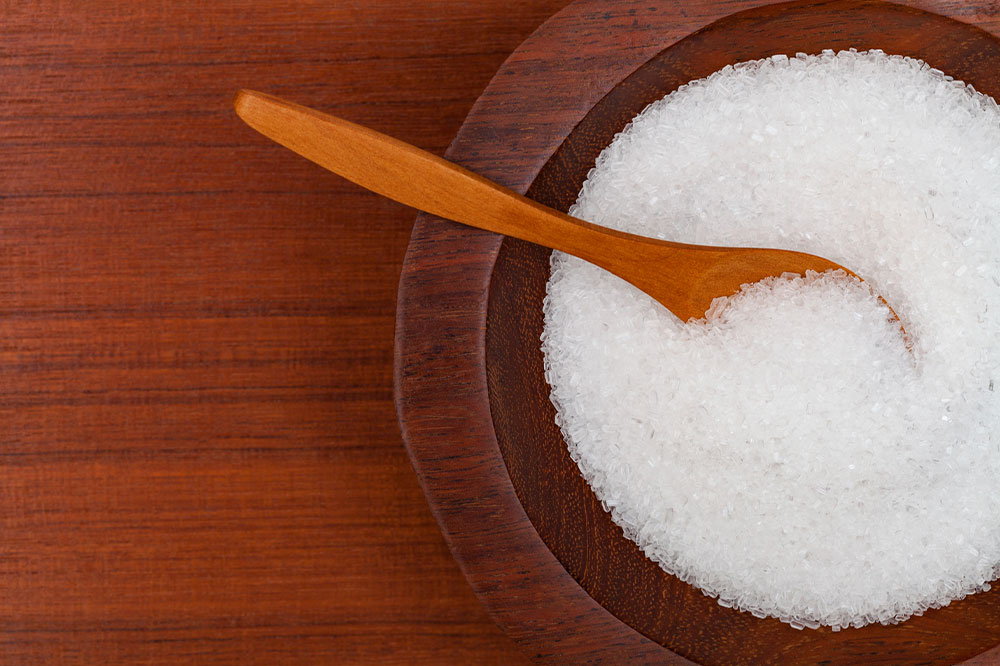
Uses, benefits, and risks of Epsom salt
Whether you wish to reduce stress, soothe sore muscles, or relax before sleeping, Epsom salt can be an excellent household ingredient to add to your wellness regime. Its benefits are widespread, including stress management and skin care. Usually, people drink Epsom salt by dissolving it in water or soak in an Epsom salt bath. But, this compound is not ideal for everyone, such as people with heart or kidney disease, children, and pregnant women.
Epsom salt uses, benefits, and side effects
Epsom salt benefits and uses
Most users dissolve Epsom salt in bath water to release sulfate and magnesium ions and reap its benefits.
Reduces stress
Epsom salts are very calming and relaxing. Magnesium deficiency is usually one of the common reasons for depression. Adequate magnesium levels enable our brain to yield neurotransmitters that help one sleep peacefully and deal with stress better. So, if you feel stressed often or find it hard to relax, consider indulging in an Epsom salt bath regularly.
For constipation
People take Epsom salt orally to cure constipation. It is an excellent home remedy and is effective because of its magnesium content, which helps with bowel moments. However, you must speak to an expert before including Epsom salt in your routine for daily consumption. It does not taste good. So, it is vital to not over-consume it. Another option is to attempt an Epsom salt bath, where magnesium is absorbed through the skin, facilitating water absorption into the intestines and aiding in bowel movements.
Lowers swelling and pain
If your feet, knees, or legs hurt or suffer from a painful condition like arthritis, soaking your legs in Epsom salt can be soothing. With regular use, you can get good relief from fibromyalgia, arthritis, or leg pain.
Promotes good sleep
Adequate magnesium intake also helps one sleep well. On the contrary, if you are low in magnesium, you will feel lethargic the whole day and find it hard to get a good night’s sleep. Consider taking an Epsom salt bath before sleeping, and your sleeping issues may reduce or go away entirely.
Provides magnesium
Individuals with a magnesium deficiency can take magnesium supplements after consulting their physician. However, a good Epsom salt bath can be beneficial if you do not take magnesium orally. As magnesium gets absorbed by the skin, it improves the nutrient’s levels in the body.
Excellent for athletes
Athletes often suffer from soreness. Hence, taking an Epsom salt bath helps them relieve muscle soreness effectively.
How to use Epsom salt?
We have read through the many uses and benefits of Epsom salt, but what is the correct way of using it? Let us find out.
Epsom salt bath soak
Prepare a warm bath and add two cups of Epsom salt for a soothing bath. Let the salt dissolve completely before soaking in it for approximately 15 minutes. Once done, rinse off any excess salt from your body.
Soaking solution for superficial wounds
To treat superficial wounds, dissolve two to three tablespoons of Epsom salt in a quart of room-temperature water. Mix the solution well and soak the affected area for at least 20 minutes. Alternatively, dip a clean piece of gauze into the solution and apply it to the wound for 20-30 minutes.
Risks and side effects
Typically, people do not endure side effects from an Epsom salt bath. However, those with sensitive skin may contract dermatitis or develop rashes. Hence, specific people or those with certain conditions must avoid oral consumption to prevent potential risks and unwanted side effects. They are:
Pregnant women
Children
Individuals with kidney or heart disease
A person drinking Epsom salt may experience the below-listed side effects:
Irregular heartbeat
Upset stomach
Fainting
Dizziness
Extreme fatigue
Diarrhea
Muscle weakness
Difficulty breathing
Blurry vision
Changes in bladder habits




